Referral marketing is a great way for businesses to get new customers. Studies show people are four times more likely to buy when a friend refers them. Businesses want more referrals, but many don't know where to start.
In this article, we won’t just talk about theories—we'll share practical strategies to boost referrals and grow your customer base. If you’re looking for a more in-depth understanding of referral marketing, find our complete guide here.
You'll learn how referral programs work and the steps to make them more successful for your business. So, let’s get started.
These are the tips that you can apply to your business, no matter what type of business you have. That’s what we’re going to cover in this section.
The first step to getting referrals naturally is making sure your customers have a fantastic experience they'll never forget. Whether it's your top-notch product or service that stands out, going the extra mile to exceed their expectations turns you into a standout brand.
What you can do is personalize interactions with your customers by recalling their preferences.
Train your team to deliver exceptional service and ensure your customer service channels are always responsive to create an environment where customers feel valued and understood.
If you have a website, add a live chat option so that users can receive support immediately. If this is too costly, use chatbots to answer frequently asked questions. But offer real-person support if their questions are not answered.
Consider this real-life example: Zappos, the online shoe retailer, is famous for its exceptional customer service.
Their representatives are known to stay on calls for hours, ensuring that customers are fully satisfied. One customer even shared that a Zappos rep helped them locate a pair of shoes that Zappos didn't stock, going the extra mile to make sure their needs were met.
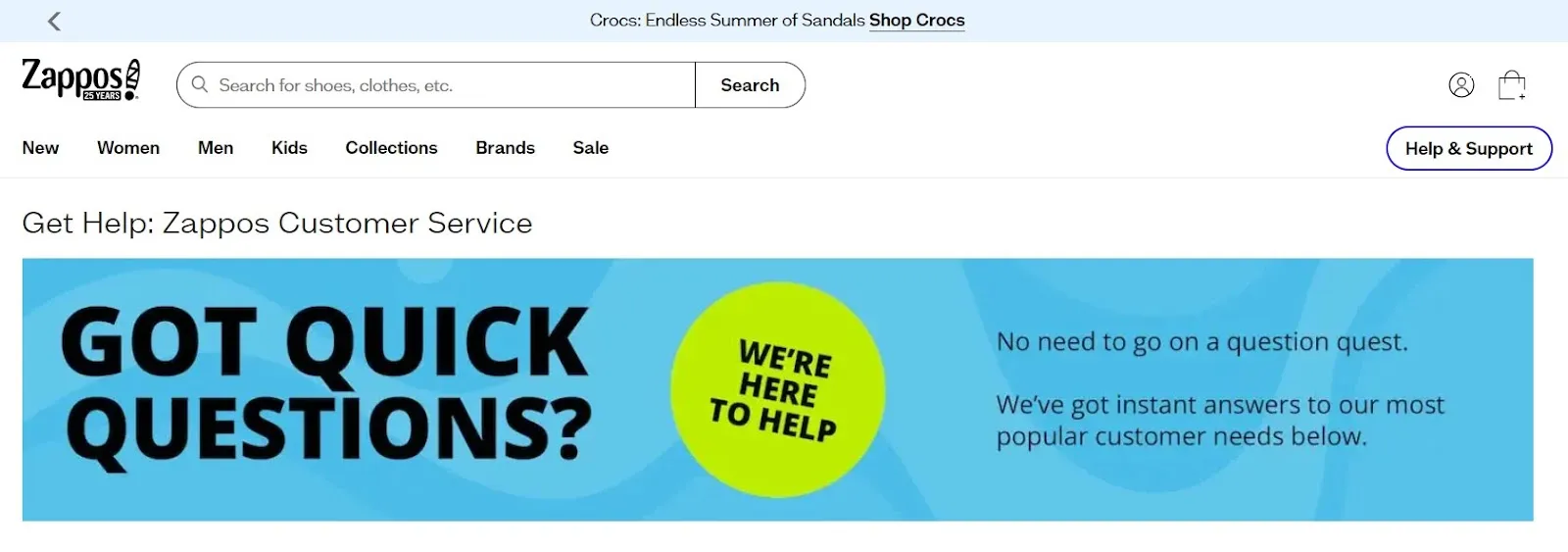
This boosts the chances of them telling others about your business. So, keep in mind how vital it is to focus on customer satisfaction. It's key to building a loyal customer base and getting positive word-of-mouth recommendations.
While natural word-of-mouth can be useful, a well-crafted referral program is your golden ticket.
Here's the deal: a referral program incentivizes your existing customers to spread the word about your fantastic products or services to their pals. It's kind of like rewarding someone for shouting from the rooftops about how amazing you are.
Let's break this down.
Need more nitty-gritty details on creating a referral program? Head over to our in-depth article on that very topic.
Also, if you're curious about real-world success stories, we've compiled a list of companies that absolutely nailed their referral programs.
Giving out rewards and incentives can boost your referrals in no time.
Depending only on your customers' kindness and if they feel like referring your business is less powerful than giving them a little nudge with rewards. By offering incentives, you excite them to join in, share their good experiences, and build a tighter bond with your brand.
Fun fact: A recent Yale and UC Berkeley study found that referral rewards help overcome customer reluctance to refer something due to the risk of the product not being good enough, which could potentially affect the referrer’s reputation.
There are different kinds of incentives and incentive systems that you can use.
For instance, you can create a tiered rewards system that offers increasing benefits for more referrals. For this to work, you can provide a small discount for the first referral and give larger discounts for the next one.
You should also consider putting up a point-based system where your customers can accumulate points for each referral and redeem them for some of your exclusive products or services.
For a deeper dive into how to choose the best incentives for your referral program, check out our guide on referral incentives. This resource will guide you through various options, helping you to select incentives that resonate with your customers and drive more referrals.
Timing is everything when it comes to closing a sale, right? The same goes for referrals.
Instead of rushing to ask new customers for referrals—which can seem a bit desperate—focus first on giving outstanding service to earn their trust.
Identify the perfect moments by analyzing customer satisfaction surveys and asking them for referrals during peak satisfaction periods. One is after a successful purchase, and another is after a positive customer service interaction.
For best results, ask the customer to refer you to friends when they’ve already answered the Net Promoter Score question. This tells you whether they’re ready or not.

Show them your dedication to quality and build a solid relationship. Then, talking about referrals will flow more naturally and authentically.
Incorporate referral requests into your follow-up emails and thank you notes, providing easy-to-use referral links or codes. This way, you can use the good vibes you've created to get referrals from happy customers.
It’s not enough that you have a pretty good program and exceptional benefits. If your customers don’t know about them, it won’t work.
Your customers must know about your referral benefits and how they can earn from them. You can create a section on your website that explains the process of referring friends and family and the rewards they can receive.
If you have an existing mailing list, you can take advantage of it and send out emails or newsletters to inform them about your referral program and its benefits. Here’s an example:
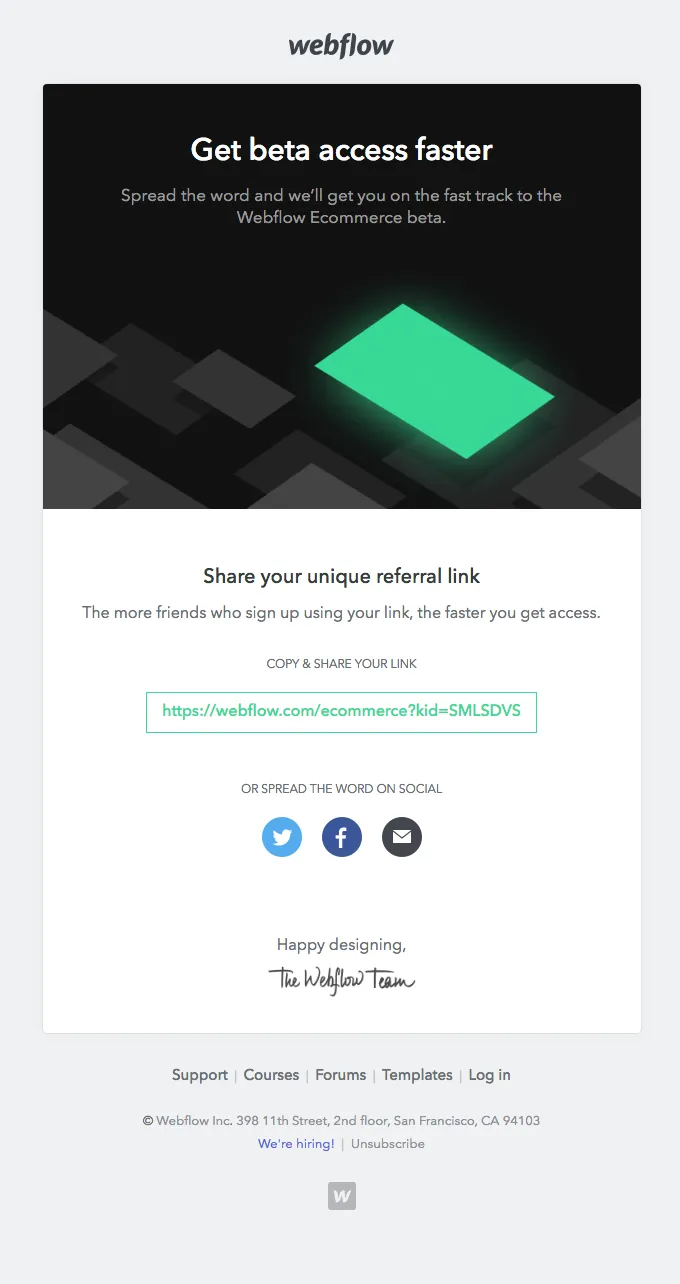
Use multiple channels, including your social media page and in-store signage.
Provide clear instructions and concise information on how to participate and the rewards waiting for them. You can create video tutorials or infographics to make the process straightforward.
This will not only encourage them to participate but also spread the word to others who are interested in earning rewards.
Regularly update your communications and post referral program success stories and testimonials to keep the excitement and motivation high.
Related Reading: How to Create the Perfect Referral Email
To make referral programs more effective, it's great to design them using feedback from users. When you involve active users' input, you can tailor the rewards and program structure to better suit their preferences and needs.
This approach puts users first, boosting engagement and making the initiative more personalized to meet their expectations. Through these feedback-driven referral programs, you can collect valuable insights and suggestions to improve your product or service.
You can gather feedback through surveys, focus groups, or even one-on-one conversations with users. Make sure to listen carefully and note their comments, as this will help you understand what motivates them to refer others.
Based on the feedback, you can also adjust the program to keep it relevant and appealing to users. You can ask users for their opinions right after they send a referral and receive their reward.
Tailor referral requests to each customer by considering their interests, preferences, and, if possible, their previous purchases.
For example, if a customer consistently shops for a specific product, you could offer them a discount or bonus for referring friends who also purchase that same product. You can also mention their names for that extra familiarity.
If you’re using an email marketing platform, you can use dynamic codes in the email like {{product}} and {{buyer_first_name}}. Each marketing platform has its own codes, so best learn what yours uses.
Start by segmenting your customer base using your CRM system to identify patterns and preferences. Then you can apply specialized referral programs based on segments. In MailChimp, you can create dynamic content and send to specific segments, like below:
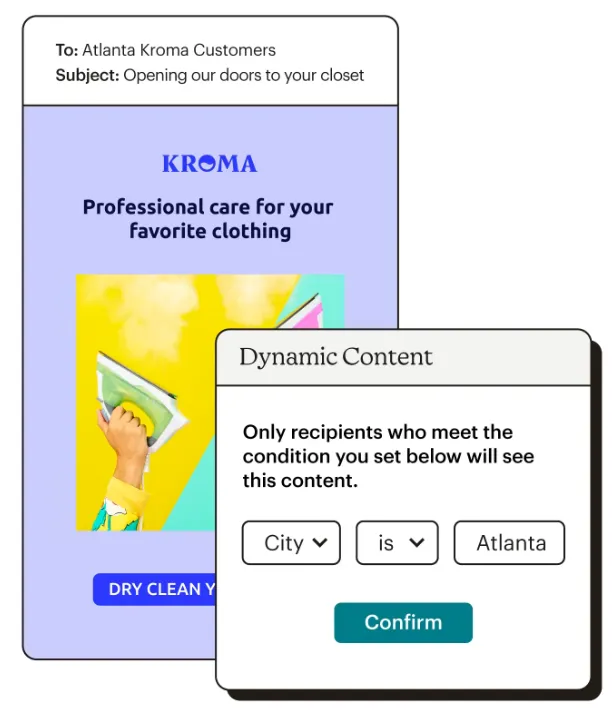
Then, send them personalized referral requests that highlight relevant products or services, which leads to customized landing pages.
When you have satisfied customers, you can easily collect positive feedback about your product or service. Curate some and display them on your website or even in your physical store.
People are more likely to trust brands with more positive reviews. Create a dedicated testimonials page on your website to showcase these reviews and highlight the most impactful feedback on your homepage.
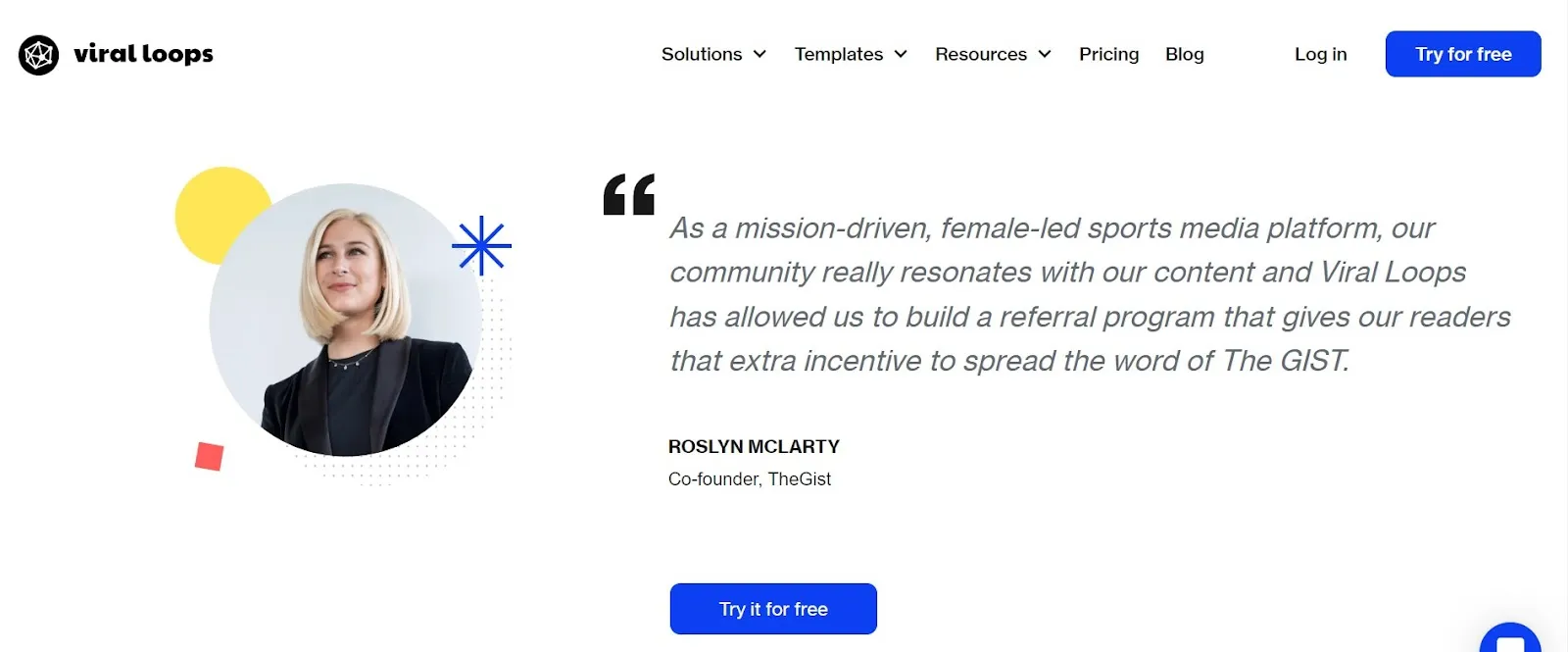
If you have awards or a badge that says you are a preferred seller or service provider, then you can put it up so people can easily see it. You can release case studies occasionally to show your product or service’s versatility.
Sometimes, all it takes is a review that resonates with a potential customer to seal the deal.
Take advantage of your social media reach.
Build a community with your repeat customers, and encourage them to share positive experiences! You can create a campaign to attract these customers. Consider doing live events, Q&A sessions, and interactive polls.
Develop a branded hashtag for these campaigns to make tracking and sharing customer interactions easier.
You can also do social media contests and giveaways to boost engagement. Your customers will automatically join in and post their interactions with your brand on their socials so their network will see how your product or service stands out.
Don’t forget to respond to comments and create a sense of belonging within your community. It’s also noteworthy that interacting with their content can boost your visibility even more.
Aside from social media, people go to websites to check on the new product or service that others are talking about. So, you have to make sure that your website is also optimized for sharing.
What’s ideal is to make the sharing process as seamless as possible. Display that share button, put up catchy images for referral rewards and make your website easy to navigate.
You can also add or incorporate interactive elements like polls, quizzes, or contests that will encourage visitors to share your content. These can be effective ways to attract more potential customers through referrals.
Another important aspect of website optimization is ensuring that it is user-friendly and visually appealing. If a visitor has a positive experience on your website, they are more likely to refer others and become a loyal customer themselves.
Add pop-up reminders or banners that highlight your referral incentives when users are most engaged. Make sure that your referral campaign is prominently displayed with a clear call to action. Keep your website content as fresh as possible by updating it to show the latest referral activities and customer success stories.
Don’t underestimate the power of pre-lists as part of your product launch strategy. This creates buzz even before you are ready to open your product or service to the public!
Offer them exclusive access to new products before you make them available to the general public, put up early-bird sales, and sneak peek previews.
During this period, you can gather feedback and suggestions to improve future products further, making your customers feel valued and heard. When they purchase during the pre-launch access, you can then offer referral incentives for sharing this privilege with their networks.

Don’t just end your customer interaction when you receive that new referral. Send personalized thank-you notes to the referrers and show appreciation!
Include details about how their referral helped your business or its impact on you. Don’t forget to mention the referral reward, discount code, or a complimentary product to make the user really feel rewarded. The details to claiming their reward must also be added. Don’t make it confusing for them!
This will make them feel valued for their kind action for your business and more likely to do another referral. You can also share milestones reached because of their efforts to keep them engaged and motivated!
If you want to reach more people and expand your customer base, consider teaming up with businesses that aren't direct competitors. You can cross-promote each other’s products and services through email marketing, social media, and in-store displays.
The most common example of cross-promotion to gain more customers is McDonalds and a kid-friendly movie. For instance, their promotion of Minions, The Movie boosted their Kiddie Meal sales, while promoting the movie at the same time.
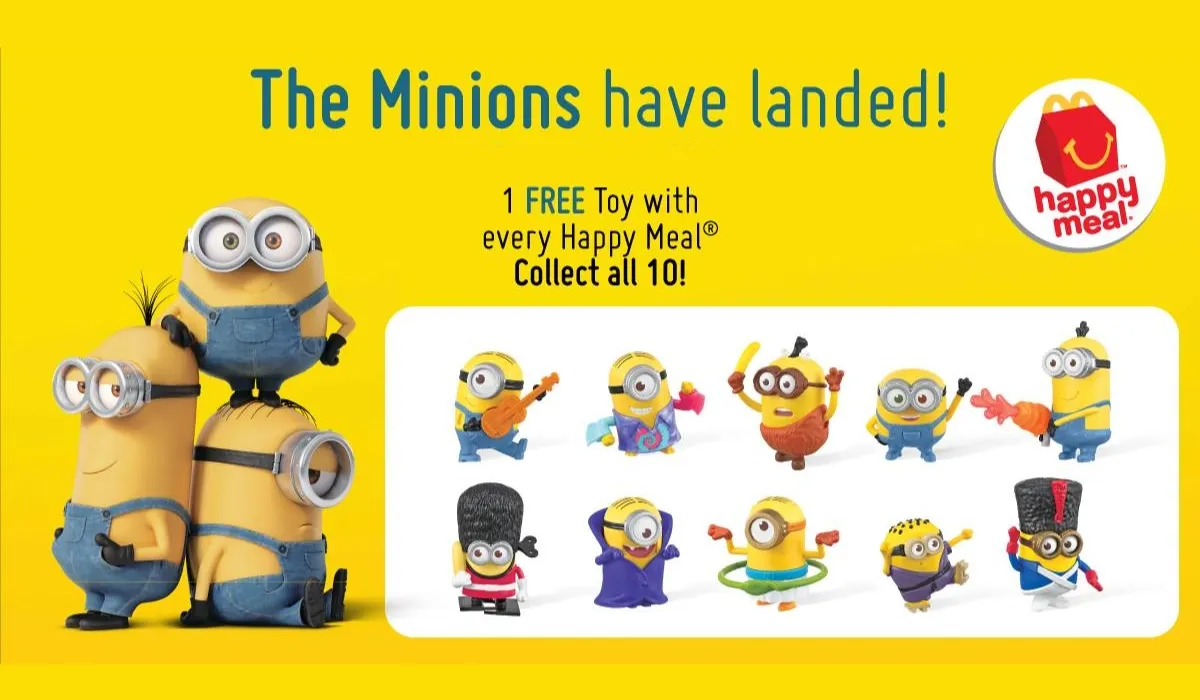
By working together on referrals, you can use each other's networks to reach new customers, boost visibility, and engage with potential clients.
This approach can help you build strong relationships that support business growth and create a network of peers in your industry.
Set clear goals and metrics to measure your partnership's success. Review and adjust your strategies to keep them effective and mutually beneficial.
You can create joint marketing materials that highlight the benefits of both businesses and make it easy for customers to understand the value that your partnership is offering.
Never underestimate the power of engaging content.
It can be a video or photo with a clear call to action, a blog post showcasing your expertise, or even a social media post highlighting customer reviews. Videos and infographics work best nowadays.
Use eye-catching visuals and compelling storytelling.
Shareable content not only helps you reach a wider audience but also establishes your brand as an authority in your industry. Make sure to consistently create and share high-quality content that resonates with your target audience that they will want to share with their network.
Regularly track your engagement metrics for these shraeable content to see and identify the types of content that resonate most with your audience. This data will definitely guide you in creating more content that performs well, improving shareability and reach.
Always encourage your audience and customers to share your content, highlighting that it can benefit people they know.

We’ve got some golden nuggets of wisdom ready to be sprinkled across various business sectors like fairy dust. Whether you're hustling in e-commerce, steering the ship of a SaaS venture, navigating the intricate B2B landscape, wowing clients in the service sector, or orchestrating seamless event experiences, we've got the right strategies for you.
Buckle up and get ready to dive into niche-specific referral tactics that will have your customers doing the marketing legwork for you. Let’s make those referral numbers skyrocket with these methods:
Have you ever dealt with those constant notifications from your go-to online shopping apps, nudging you to finish up that one pending order?
Well, here's a tip—take it a step further. Tell the customer to refer other customers so they can get an additional discount for the item already in their cart! This will not only incentivize the original customer to complete their purchase, but also encourage them to refer others and spread the word about your brand.
Sending abandoned cart emails with referral incentives offers a double whammy of motivation.
Firstly, it nudges customers to complete their purchase, tackling those pesky abandoned carts.
Secondly, the referral discount adds a dash of urgency and excitement. This smart strategy taps into FOMO and the magic of personal recommendations, boosting the chances of a purchase and a referral. Win-win!
To amp up this strategy, personalize those abandoned cart emails. Give a nod to the specific items left behind, nudging the customer about their interest and highlighting exclusive referral savings. Spice it up with snazzy graphics and a clear call-to-action button guiding them to finish their purchase and invite friends.
By making the process smooth and enticing, you’ll not only convert those abandoned carts into sales but also snag new customers through referrals.
Social media influencers can boost your product’s visibility a lot. These influencers have a great influence on their followers (thus their title). You can take advantage of the audience they already have by collaborating on co-branded content rather than trying to reach a new audience on your own.
When finding influencers, choose those whose values and aesthetics align with your brand is also important.
Of course, you have to monitor the effectiveness of each influencer’s referral codes and discounts.
Use unique referral codes or trackable links to each influencer to accurately measure the traffic and sales generated from their posts. Or you can use influencer network platforms like TapInfluence, Upfluence, and AspireIQ to connect with the right people and track campaign performance and ROI.
This is a next-level social media strategy.
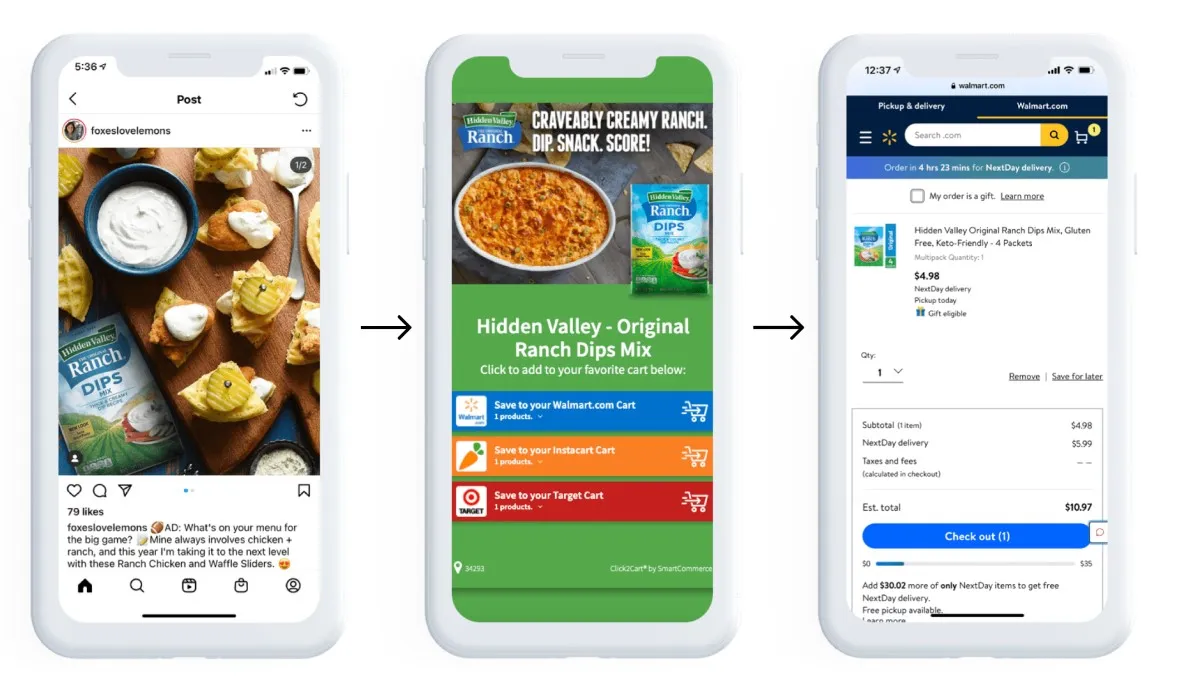
In the bustling world of e-commerce, where everyone is vying for attention, a well-timed pop-up can make all the difference. Imagine a customer lingering on a product page for a bit too long—cue the pop-up offering them a referral bonus if they buy now and share a friend's email who gets a discount on their first order. It’s like giving them a nudge with a velvet glove.
Not all pop-ups are created equal, which is why A/B testing is your secret weapon. By experimenting with different designs, messages, and timings, you can identify what resonates best with your audience.
Maybe it’s the cheeky tone that grabs their attention, or perhaps it's a sleek design that makes them pause. Or do they want cashback more than discounts? Test and tweak until you strike gold.
Best Practices for Effective Referral Pop-Ups
Study your customer journey and craft clear and creative pop-ups for each applicable phase. Provide your customers with real-time referral opportunities based on their shopping behavior.
User-generated content (UGC) is brand-specific content created by social media users and posted on various channels.
We’re at a social media revolution time. Everyone’s on social media posting various parts of their lives. It’s as easy as ever to encourage your customers to share any content related to your business.
Getting featured on your page is a reward in itself. People like getting recognized.

You can also do a themed content contest for your customers to produce their content and share it on their own social media accounts, letting their network know about your product. Offer attractive prizes and always feature winners on your social media pages to motivate participation.
Include a voting mechanism in these contests so that participants and their networks can vote for their favorite entries. By doing this, you’re actively engaging with your customers, expanding your brand’s visibility, reaching new audiences, and, as a bonus, creating authentic marketing materials that resonate with your audience.

Loyalty programs reward your customers for sticking around, making repeat purchases, and generally being awesome. Referral programs, on the other hand, leverage the power of word-of-mouth by rewarding customers for bringing in new faces.
When you integrate these two, you create a cycle of continuous engagement and growth. While loyalty programs focus on retention, referral programs drive acquisition. Together, they create a holistic strategy.
Integrating these programs means strategically rewarding loyalty points for referrals. For instance, a customer gets 50 loyalty points when a referred friend makes their first purchase.
This way, you're not just thanking them for their loyalty but also incentivizing them to expand your customer base.
Here are more creative synergy ideas:
First things first: make sure the referral feature is easy to find and even easier to use. Think of it as the VIP lounge of your app—exclusive, but not hidden behind a maze.
Placement Tips:
We recommend testing different button designs, text, and placements to see what grabs attention. Try and experiment with humorous versus straightforward messaging. You might find your users prefer a touch of wit!
You must determine the ideal moments to present the referral option. Right after a positive interaction often works wonders.
Rewarding referrers for their efforts isn’t just about giving physical stuff. How about mixing it up with some incredible experiences like an early access to beta features? Think of your beta testers as the VIPs of your product launch campaign—eager, enthusiastic, and influential.
This way, you're not only thanking referrers with special perks but also getting them to share honest thoughts on your app's latest features.
Plus, beta testers can feel a sense of ownership and involvement in the development process, creating a deep connection to your brand. It's a win-win for building a close community.
Here’s a sample strategy:
When launching a new feature, invite your most active users to become beta testers.
In exchange for their feedback, let them enjoy the feature before anyone else. Then, sweeten the deal with an irresistible referral incentive: “Love being a beta tester? Share this exclusive access with three friends and unlock additional premium features for both of you!”
This approach capitalizes on their eagerness to explore new features while leveraging their network.
For SaaS businesses, a little creativity goes a long way in driving referrals. Enter usage-based rewards—a clever tactic that transforms regular users into referral champions. Think of it as turning your customers’ everyday interactions with your service into opportunities for growth.
Imagine a user who’s just hit a milestone like sending their 100th email through your platform. Celebrate this achievement with a pop-up saying, “Congrats on reaching 100 emails! Share our service with a friend and get one month upgrade for free!”
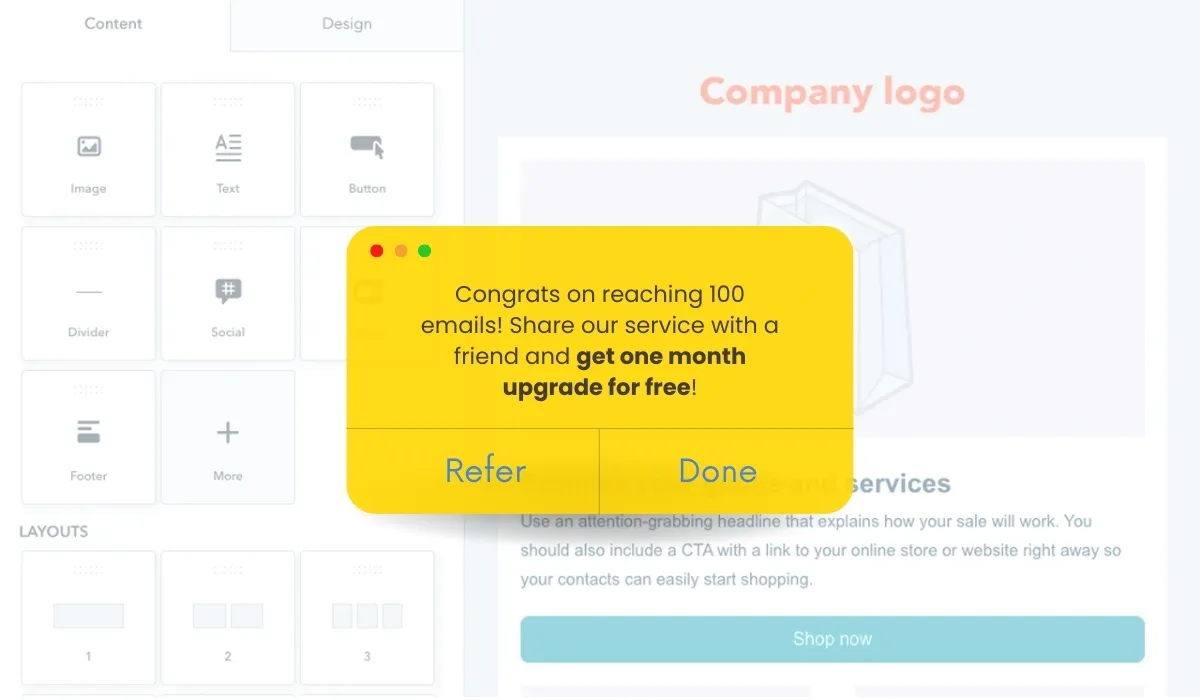
This kind of timely, usage-based reward not only celebrates their engagement but also nudges them to spread the word.
Here are some concrete steps to utilize this strategy:
To keep things interesting, offer your users unique rewards! Create a referral milestone system where each milestone unlocks a premium feature.
Give them a real benefit for spreading the word about your app. This could include access to exclusive content, a discount on their subscription, or even a free upgrade to a higher service tier.
Don’t forget to highlight the value of these features through detailed descriptions and user testimonials to make them more enticing. Not only does this incentivize referrals, but it also showcases the value of your app and encourages users to continue using it.
Think about teaming up with other SaaS providers that go well with what you offer. When you partner with platforms that fit together, you build a network where everyone wins with cross-referrals and integrated solutions.
This is very much similar to the method we mentioned above: working with a complementary business. But here, we take it further.
Since you’re in the business of technology, incorporate API integration with complementary companies. This can be done on both yours and your partner’s tech, and you can both promote your integration.
Partnering with other companies not only boosts your audience’s awareness of your brand, but also boosts your reputation.
Our cross integration with Slack is a good example.

Why go solo when you can double the fun and results? Co-create whitepapers, eBooks, or research reports with your clients or partner firms. Think of it as a collaborative jam session where your combined knowledge hits just the right note. For instance, imagine partnering with a leading tech firm to produce an insightful whitepaper on the future of AI.
Once the masterpiece is ready, promote these materials together. Share them via social media, email newsletters, and even webinars. Use both networks to cast a wider net and reel in a larger audience. This B2B referral strategy not only generates referrals but also boosts credibility. It’s like having a wingman who’s also your biggest fan.
You can partner with delighted clients to craft detailed case studies that spotlight how your genius solutions have transformed their business.
This isn't just any case study; it includes compelling quotes and impressive statistics.
Imagine a tech startup that doubled its user base thanks to your software or a retailer whose sales skyrocketed after adopting your marketing strategy.
Now, let's talk execution.
Start by identifying your happiest clients—those who sing your praises unprompted. Set up an interview to gather their insights, and don't be shy about asking for those golden quotes. Dig into their data to extract meaningful statistics that showcase your impact.
Once the case study is polished and glowing, encourage your client to share this success story far and wide within their network. There's a huge chance their competitors are watching their pages and may even be curious enough to work with you, too, in order to achieve the same results.
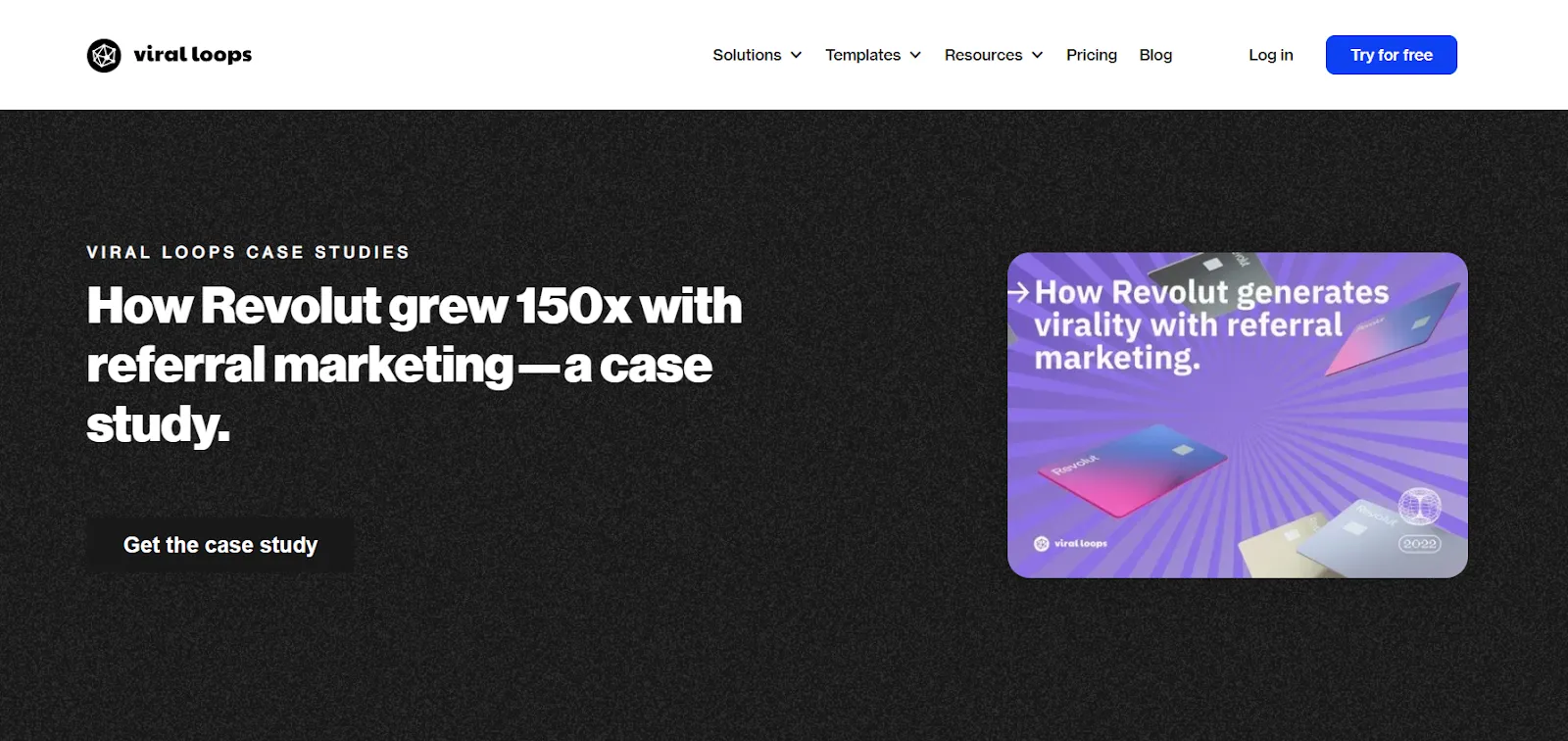
Want to truly maximize industry events? Be proactive: mingle with folks from various businesses, both within and outside your field.
This approach helps you forge new partnerships, strengthen existing connections, and build a robust network. Not only will this network provide useful referrals, but it will also act as a support system, helping you all grow and succeed together.
Make sure to check the schedule and activities listed by the host. Most of the time, they set a space and sub-event focused on networking. You can even host a side event on your own by fitting it into the event's schedule!
Here’s a good example of a company hosting what they dubbed an “unofficial closing party” for the Affiliate Festival in Dubai:

To make the most of each event, set specific networking goals. Before you go, jot down the key individuals or businesses you want to connect with and prepare some relevant talking points.
After the event, follow up. Exchange contacts with promising connections and reference your conversation to show genuine interest in exploring potential partnerships.
Take it a step further by hosting exclusive webinars, roundtables, or virtual conferences tailored for industry pros. Invite current clients and encourage them to bring colleagues from their networks. Offering valuable insights can naturally lead to referrals. It's like planting seeds for your networking garden—watch it bloom!
Providing well-designed physical referral cards to your customers is like giving them the ultimate secret weapon to spread the good word about your business. This is an old school but still cool technique.
These little gems encourage satisfied clients to share their positive experiences with friends and family, effortlessly boosting customer loyalty while expanding your clientele through the magic of word-of-mouth recommendations.
Steps to implement this strategy:
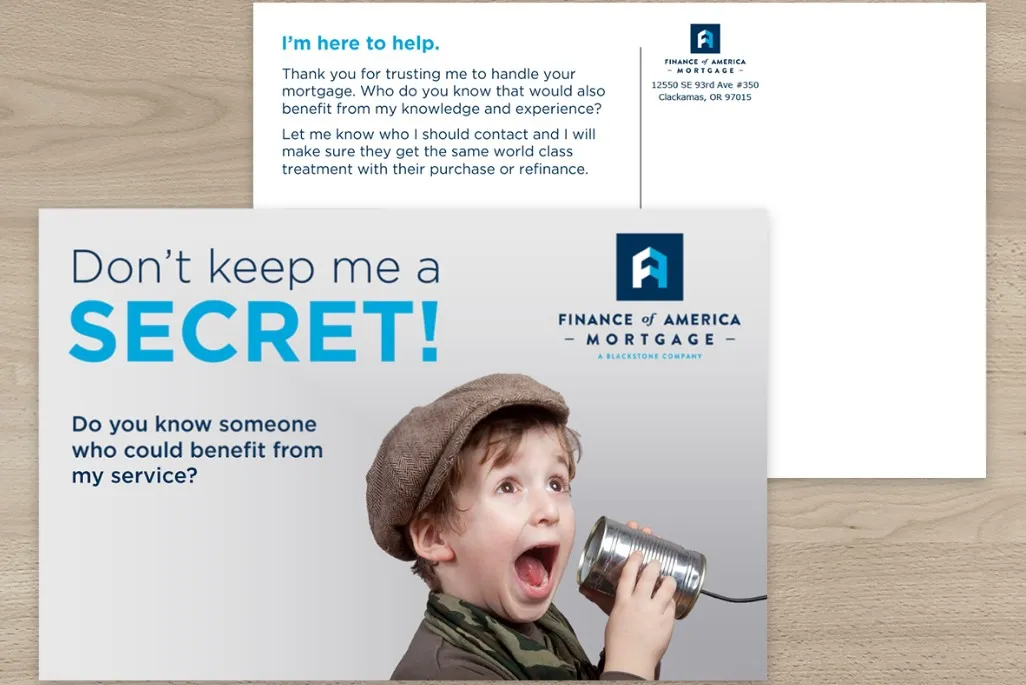
Image source: Behance
When you show appreciation with a tangible gesture, you’re creating a lasting bond that goes beyond the first interaction. It’s the start of a beautiful, long-lasting relationship that fosters continuous referrals.
In essence, your business grows organically, one delighted customer at a time. Now, isn’t that a card worth playing?
Going the extra mile in customer service makes your business stand out. When you follow up with your customers, you're not just showing that you care about their happiness but also building stronger connections.
Consider giving them special deals based on what they like, asking for their thoughts to keep improving, and even requesting referrals to grow your customer circle.
These moves can help build loyalty, increase interaction, and lead to business growth in the long haul. Incorporate personalized elements into your follow-up calls, like referencing their past purchases or feedback they provided to show that you value their individual experiences.
Going the extra mile in customer service doesn't just make your business stand out; it transforms your customers into loyal fans. You follow up with a customer, not just to check a box, but to genuinely show you care about their happiness. This small act builds stronger connections and leads to long-term success.
When calling for a follow-up, your aim can include:
Personalized Deals
Tailor special offers based on what your customers like. For instance, if a customer frequently buys running gear, send them a discount on the latest sneakers. This shows you pay attention to their preferences.
Feedback Requests
Actively seek your customers' thoughts to keep improving. Send a follow-up email asking for feedback after a purchase. Not only does this show you value their opinion, but it also provides you with crucial insights to refine your offerings.
Personalized Follow-Ups
When reaching out, reference their past purchases or feedback. For example, "I hope you're enjoying the running shoes you bought last month. We've just released a new line of athletic wear you might love!" This demonstrates that you value their individual experiences and are attentive to their needs.
Remember, customer service isn't just a department—it's an attitude. And with a little wit and a lot of heart, you can turn every customer interaction into a memorable experience.
Host engaging referral contests at your events, where you can offer exciting prizes to attendees who will bring in the highest number of referrals.
This fun and interactive activity not only boosts participation but also creates traction around your event, enhancing the overall experience for everyone involved.
Consider showing a live leaderboard during the event to show real-time standings, adding a competitive feel that can stir up participation and excitement.
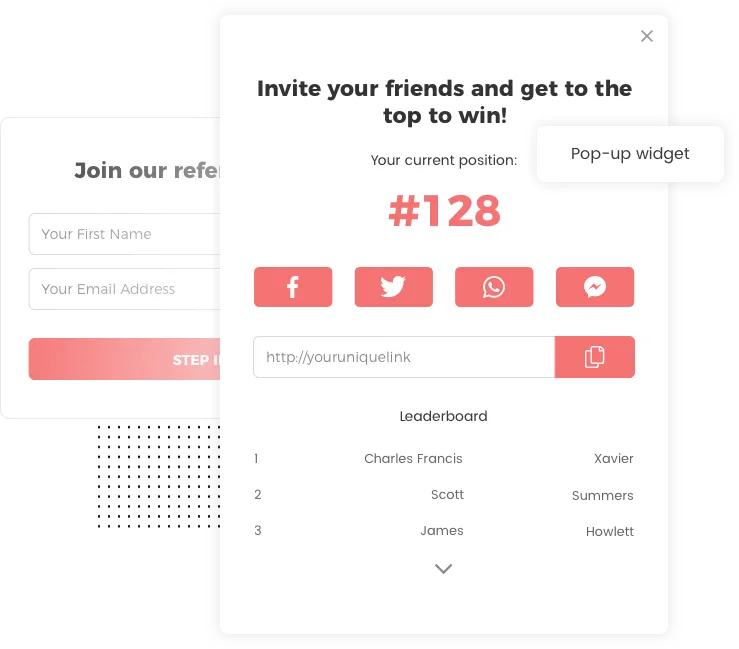
Promote the contest in advance through social media and email newsletters. Clearly outline the rules, prizes, and how your attendees can join.
Related Reading: How to Increase Event Attendance: 16 Tips for a Sold-Out Event
Encourage event speakers to not just promote the event to their network but also to engage with their audience before and after the event actively. This helps build stronger connections and boosts the chances of getting referrals. Working together like this can really boost the success and impact of the event!
Create a speaker engagement plan, including personalized communication with each of your speakers. Give them promotional materials, key event details, and their personalized referral codes in advance.
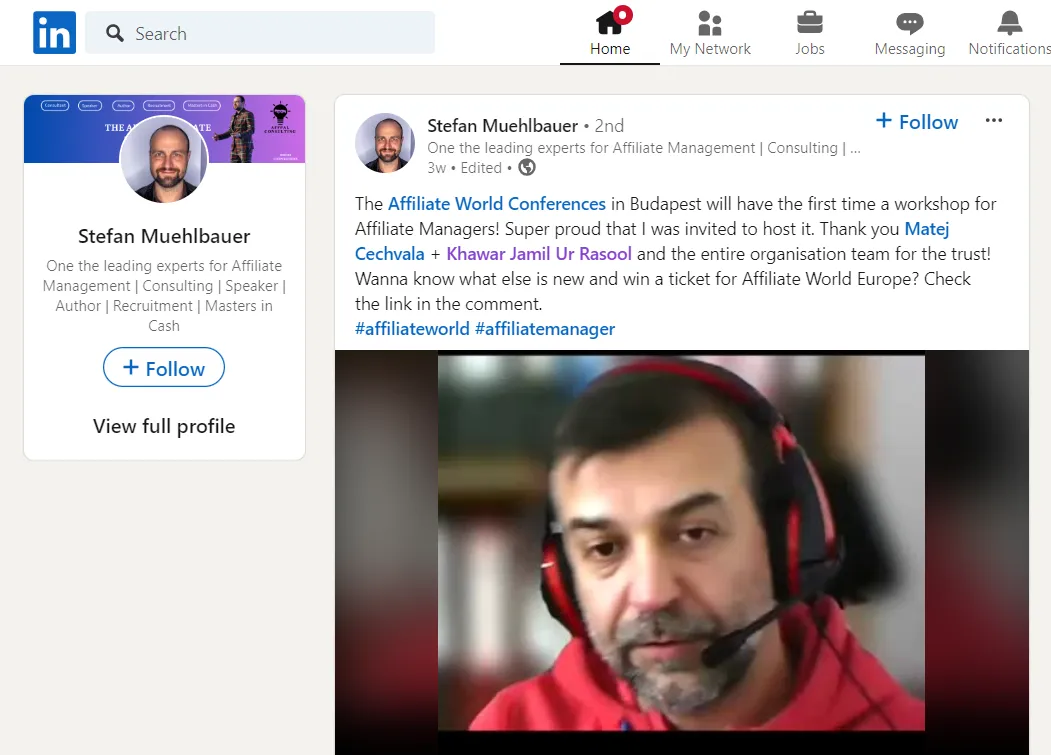
If you can, encourage your speakers to include their referral links in their presentations or interactions. Or at least provide your speaker/performer with a link to a unique landing page specific for them.
Offer exclusive early-bird discounts or pre-sale access to your loyal followers well before tickets go on sale to the general public. This not only rewards their loyalty but also creates a sense of urgency.
Here’s where the magic happens: incentivize these early adopters to spread the word. How?
Consider a “Bring a Friend” promotion where early-bird buyers get an additional discount or a VIP upgrade if they refer a friend who also buys a ticket.
Imagine this message popping up just after they snag their tickets: “Love what you see? Share the love! Get VIP access when your friends join the fun!”
Take a look at how this technique was brought to life by Mustard Media, a highly successful event and festival organizer.
Businesses should never underestimate the wizardry of tracking and turbocharging their referral programs. The secret sauce here: track, analyze, optimize. Referral marketing tools like Viral Loops can turn this Herculean task into a walk in the park.
Keeping a vigilant eye on your referral campaigns is crucial. Use advanced analytics to spy on referrals, conversion rates, and overall performance metrics. This data is your treasure map to uncover trends and patterns. Spot which referral methods are crushing it and which customer segments are most hooked.
Next, dive deep into your key performance indicators—referral rates, conversion rates, and customer lifetime value. These golden nuggets will steer you in making savvy decisions, ensuring you channel your efforts and resources where they truly shine.
Plus, never stop polishing your product! Create a feedback loop by consistently gathering and acting on customer feedback. Tackle concerns and suggestions head-on, using surveys, focus groups, and direct chit-chats to grasp their views on price, quality, and after-sales service.
When customers see your relentless drive for improvement, they'll not only stick around but also become your brand's biggest cheerleaders. Remember, a happy customer is a loyal customer, and a loyal customer is your best marketing maestro!